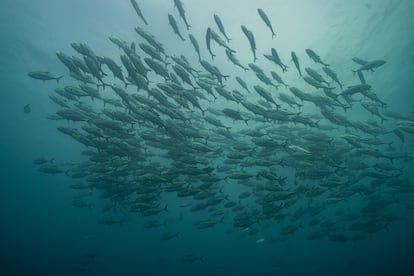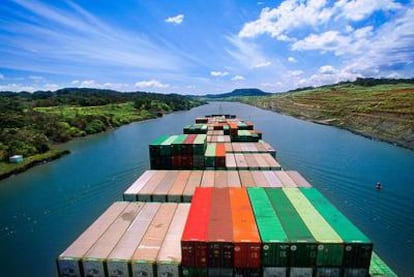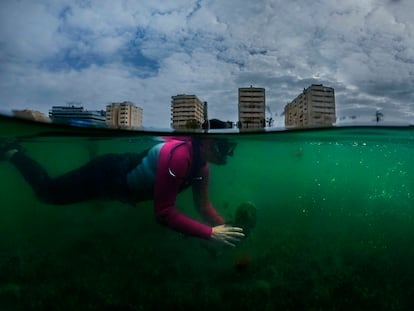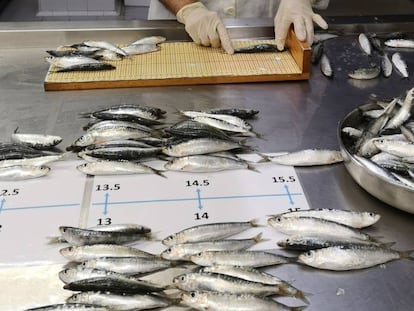Panama doubles the size of its protected marine areas
Home to turtles, sharks and whales, the newly expanded Cordillera de Coiba zone has nine mountain ranges under the ocean’s surface, with some seamounts more than 3,000 meters tall


Panama has taken a giant leap forward in protecting its waters. The Central American country is rich in biodiversity but it is also one of the countries most threatened by climate change. On June 8 – World Oceans Day – it announced it would expand a marine reserve in its Pacific waters to cover 67,742 square kilometers. That’s close in size to its land mass of 75,517 square kilometers.
The area incorporates the Cordillera de Coiba, an area rich in fish stocks and an important feeding ground for many marine species. Combined with the neighboring reserves of Colombia’s waters, the protected area will expand to 121,341 square kilometers, making it the third largest marine reserve in the tropical Pacific. “We are very happy,” said Milciades Concepción, Panama’s environment minister. “The whole region is very excited that Panama is going to achieve this.”
Panama created the existing 17,223-square-kilometer marine reserve in September 2015 to protect threatened flora and fauna and critical fish stocks. With the support of experts from the Smithsonian Tropical Research Institute, Panamanian authorities have now expanded this across nine submerged mountain ranges, where some underwater peaks reach 3,000 meters high. An important array of 14 different species of marine mammals live in the zone, which is a feeding and breeding ground for sea turtles, marlins (or sailfish), sharks and whales, including species considered vulnerable or endangered. The decision “will double the amount of Panamanian marine surface that is under some degree of protection,” according to a Smithsonian statement. This decision also makes Panama compliant with the goals established by the Convention on Biological Diversity, which was signed by 196 countries and came into force in 1993.

To guarantee the protection of the new area, Concepción said that his government is in talks with international organizations to oversee the protection of natural resources using tech-driven monitoring tools. “We are establishing the mechanisms to monitor the area, as well as the creation of a management plan that we are coordinating with the Smithsonian Institute, which establishes surveillance, supervision and control, and which will help us to comply with the limitations that this protected area requires in the use of its resources,” he said.
Panama is a major global trade hub. The country expanded its famous canal in 2016 and official data show that 4,899 ships crossed this crucial waterway between the oceans in 2019. Studies conducted by Smithsonian experts show that among the ships that cross the protected zone are international merchant vessels, although oil tankers are the ones that ply these waters the most. There are also international fishing boats that use fine-mesh nets to catch tuna illegally, an activity that generates profits of around $5 million annually. Bycatch includes sharks, which get trapped in the nets. “This type of fishing is very environmentally damaging because of the quantities that are fished,” explained Héctor Guzmán, of the Smithsonian Tropical Research Institute. “This should not be happening.”
Guzmán is the architect of the marine reserve’s expansion, and secured the funds to expand it via international organizations. “The plan is to reduce fishing in the area and allow stocks to reach the area closest to the coast, where the Panamanian artisanal fleet is located. Also, we will only allow selective fishing that does not affect other species such as sharks or turtles, contributing to conservation efforts. This will allow the stock to recover, because it will no longer be fished in a destructive way, and that will benefit the local economies that will actually be able to access it.”

Conservationists are enthusiastic about the new protected area, created by decree by Panama’s president, Laurentino Cortizo. Among those backing the project is Maximiliano Bello of the Mission Blue organization, which tries to persuade nations to create marine protected areas around the world. “If each country did its part, as Panama is doing, it would provide a better future for these marine ecosystems,” argued Bello. “Seamounts [underwater mountains] are among the most important physical elements for biodiversity. Seamounts generate oceanographic processes, such as currents in the water, which stimulate life. They are key areas for marine species,” he added. Protecting these areas is an investment in the future for populations who survive off the sea’s riches, he says. “We have to put more resources and investment into caring for nature, because it is an important generator of capital. We have to extend incentives for conservation, because it is the source of all economic activity.”
Tu suscripción se está usando en otro dispositivo
¿Quieres añadir otro usuario a tu suscripción?
Si continúas leyendo en este dispositivo, no se podrá leer en el otro.
FlechaTu suscripción se está usando en otro dispositivo y solo puedes acceder a EL PAÍS desde un dispositivo a la vez.
Si quieres compartir tu cuenta, cambia tu suscripción a la modalidad Premium, así podrás añadir otro usuario. Cada uno accederá con su propia cuenta de email, lo que os permitirá personalizar vuestra experiencia en EL PAÍS.
¿Tienes una suscripción de empresa? Accede aquí para contratar más cuentas.
En el caso de no saber quién está usando tu cuenta, te recomendamos cambiar tu contraseña aquí.
Si decides continuar compartiendo tu cuenta, este mensaje se mostrará en tu dispositivo y en el de la otra persona que está usando tu cuenta de forma indefinida, afectando a tu experiencia de lectura. Puedes consultar aquí los términos y condiciones de la suscripción digital.










































